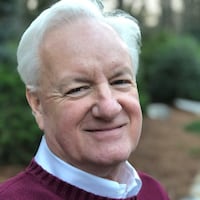The Braves restocked their minor-league system this week with 22 selections in the MLB draft, all of whom have hopes -- but no guarantees -- of someday playing at Truist Park.
Here are five takeaways from the Braves’ draft:
1. Pitching still paramount
The Braves were true to their reputation as a franchise built on arms. They chose pitchers with their first four picks, seven of their first 10 and 11 of 22 overall.
Their top three picks were hard-throwing, high-upside high school righthanders: Owen Murphy of Riverside, Ill., JR Ritchie of Bainbridge Island, Wash., and Cole Phillips of Boerne, Texas. Murphy was the No. 20 overall pick, Ritchie No. 35 and Phillips No. 57.
The Braves also are excited about their fourth selection: Auburn right-handed reliever Blake Burkhalter, taken on the strong recommendation of Braves Hall of Famer (and Auburn pitching coach) Tim Hudson with the compensation pick received for losing Freddie Freeman to free agency. The Braves plan to try Burkhalter, the No. 76 overall pick, as a starter but also regard him as a potential closer.
Several decades of Braves history, as well as the team’s current starting rotation, show the payoff of acquiring and developing young arms. But the same history also shows that many highly touted pitching prospects will come up short, underscoring the importance of quantity. By again drafting pitchers in bulk, the Braves are trying to sustain a winning formula.
“We’re going to bring home another title to Atlanta,” Ritchie said on MLB Network from the draft site in Los Angeles.
2. Not afraid of ‘Tommy John’
The Braves’ second-round pick, Phillips, is in the early stages of a 12-month-or-more rehabilitation from Tommy John elbow surgery, which he underwent in April. Their seventh-round pick, Oregon pitcher Adam Maier, appeared in only three games this season because of an elbow injury that the Braves believe may require TJ surgery soon.
But those injuries didn’t deter the Braves, whose current rotation includes two pitchers acquired not long after they had Tommy John surgeries: All-Star Max Fried and rookie Spencer Strider. Fried was a 20-year-old prospect just four months removed from his surgery when the Braves got him in a trade with San Diego in December 2014. Strider missed the 2019 season at Clemson after having the surgery and pitched only 12 innings for the Tigers in 2020 before the Braves surprisingly drafted him in the fourth round that year.
If not for the injuries, the Braves might not have acquired either player: The Padres probably wouldn’t have dealt Fried, and Strider might not have lasted until the fourth round. Similarly, the Braves believe Phillips – “a Texas fireballer” with a 100-mph fastball, Brown said – would have been a first-round pick and Maier a top-four-rounds pick if not for their elbow injuries.
“Ever since the Strider pick, we look for ways to somehow buy lower and maybe get some good return,” Braves vice president of scouting Dana Brown said.
3. Impact of universal DH
The Braves’ first two position-player picks were collegiate power hitters with defensive question marks: Missouri State catcher Drake Baldwin (19 homers in 60 games this year) in the third round and UNC Charlotte third baseman/first baseman David McCabe (30 homers in 283 at-bats over the past two seasons) in the fourth round.
The Braves’ decision to draft the players, particularly the 6-foot-4, 230-pound McCabe, was influenced by MLB’s adoption this year of the universal designated hitter, which could provide an alternative way to get them in the lineup if they don’t develop defensively as hoped.
“A lot of times in the past, because we’re a National League team, you would (draft) guys that you knew could play a position,” Brown said. “Now, you have some flexibility that, if you really like the bat and he could play a big role in your lineup and hit somewhere between 1 and 6, you may be more interested in that player. With a guy like McCabe, a switch-hitter with power, that is intriguing.”
4. Mind-boggling two-way stats
Murphy, the Braves’ first-round pick, posted some incredible numbers during his senior year of high school. As a pitcher: 0.12 ERA, four no-hitters, 137 strikeouts in 58-1/3 innings. As a hitter: .548 batting average, 18 home runs runs in 36 games. (He played shortstop when not on the mound.)
In a Zoom call with reporters minutes after being drafted, Murphy said he expected to begin his pro career as a two-way player, a la the Los Angeles Angels’ Shohei Ohtani. “He’s a great asset to the league, and he shows that you can still play the game being an athlete and doing it all,” Murphy said. “I aspire to be that way.”
But the Braves quickly made it clear to Murphy that they intend for him to focus exclusively on pitching, where they believe his athleticism will serve him well.
Statistics notwithstanding, Murphy didn’t expect to be drafted quite as high as he was. “It caught me by surprise and caught my family by surprise,” he said, “but I’m really happy about it.”
5. From near and far
The Braves drafted three players with local connections: second baseman Cory Acton, who played this past season for Georgia after transferring from Florida, in the ninth round; outfielder Kevin Kilpatrick, who attended DeKalb County’s Redan High, in the 17th round; and outfielder Christian Jackson, who attended Henry County’s Dutchtown High, in the 19th.
The Braves also looked far and wide for talent, drafting players from schools in 14 different states, including four players from California. They selected three Canadian players – McCabe, Maier and pitcher Cedric De Grandpre (13th round).
About the Author




